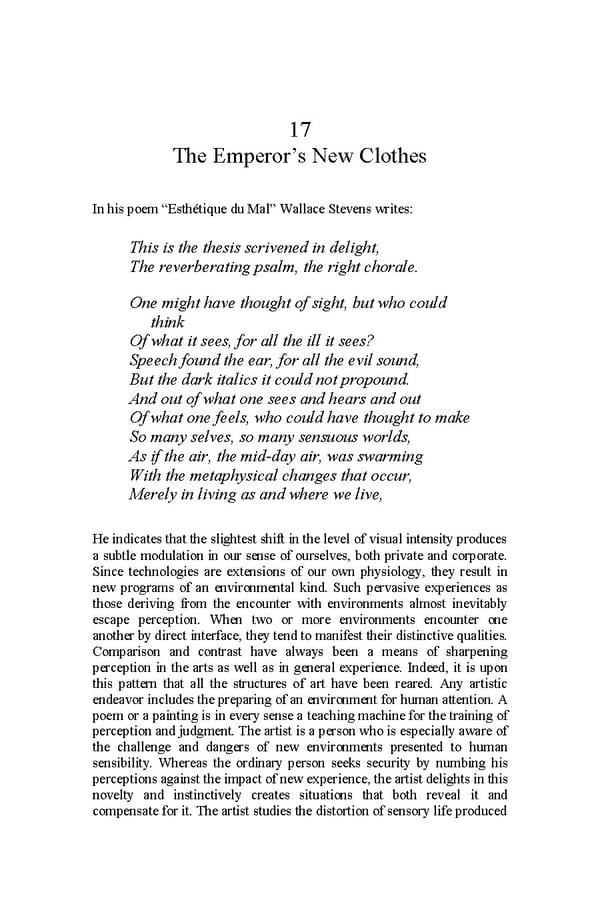17 The Emperor’s New Clothes In his poem “Esthétique du Mal” Wallace Stevens writes: This is the thesis scrivened in delight, The reverberating psalm, the right chorale. One might have thought of sight, but who could think Of what it sees, for all the ill it sees? Speech found the ear, for all the evil sound, But the dark italics it could not propound. And out of what one sees and hears and out Of what one feels, who could have thought to make So many selves, so many sensuous worlds, As if the air, the mid-day air, was swarming With the metaphysical changes that occur, Merely in living as and where we live, He indicates that the slightest shift in the level of visual intensity produces a subtle modulation in our sense of ourselves, both private and corporate. Since technologies are extensions of our own physiology, they result in new programs of an environmental kind. Such pervasive experiences as those deriving from the encounter with environments almost inevitably escape perception. When two or more environments encounter one another by direct interface, they tend to manifest their distinctive qualities. Comparison and contrast have always been a means of sharpening perception in the arts as well as in general experience. Indeed, it is upon this pattern that all the structures of art have been reared. Any artistic endeavor includes the preparing of an environment for human attention. A poem or a painting is in every sense a teaching machine for the training of perception and judgment. The artist is a person who is especially aware of the challenge and dangers of new environments presented to human sensibility. Whereas the ordinary person seeks security by numbing his perceptions against the impact of new experience, the artist delights in this novelty and instinctively creates situations that both reveal it and compensate for it. The artist studies the distortion of sensory life produced
 Essential McLuhan Page 336 Page 338
Essential McLuhan Page 336 Page 338